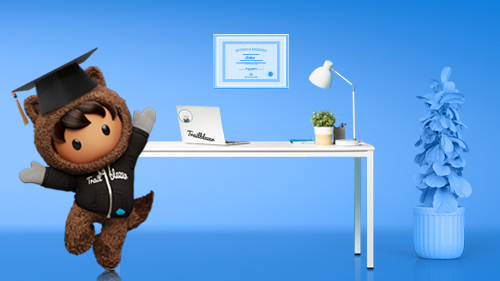
Get your FREE 30-day trial.
Please complete all fields.
At Salesforce, we believe our culture is our biggest differentiator and greatest competitive advantage. It's what helps us attract, engage, and retain passionate, creative, and driven people. Those people propel our growth, innovation, and social impact each and every day. And, they're the reason we were named #1 on the FORTUNE "100 Best Companies to Work For®" list.
Building and maintaining a great culture isn't easy, though — especially during periods of rapid growth. Since 2013, we've grown from 13,000 employees to 32,000. On-boarding thousands of new hires each year is a true test of the strength of our culture and of our ability to maintain an exceptional employee experience.
How do we do it? At Dreamforce '18, I will share some of our secrets for creating and maintaining a strong culture in a session titled, “How We Made Salesforce #1 on the FORTUNE 100 Best Companies to Work For List.” But in case you won't be joining us this year — or for those who just can't wait — here are three easy steps to create a winning company culture:
Let's start with my personal story. I was previously Salesforce's Head of Competitive Marketing. During my time in this role, I had what you might call a “eureka moment.” It became obvious to me that our employees are our true competitive advantage. These are our biggest brand advocates. They bleed Salesforce blue wherever they go, especially in customer meetings. Whenever making presentations, prospects and customers would say, “I want to work with this person!” So, I realized I could either try to triage competitive deals until I was blue in the face or I could build a strong army of brand advocates who could help us to attract, engage, and retain both customers and employees.
Today, my team — the Employee Marketing and Engagement team — works with our entire Employee Success team along with our company's leaders and managers to drive higher levels of engagement at every stage of the employee journey at Salesforce — from recruitment to on-boarding to every day programs and communications — in an effort to win the loyalty and advocacy of our employees. Businesses tend to think a lot about how to engage customers at each stage of the journey. We need to do the exact same thing internally. Our employees are every bit as important as our customers.
An engaged employee gives more, stays with you longer, advocates for you, and ultimately helps attract great new employees. But not every employee is engaged.
In fact, according to a Gallup study, two-thirds of the global workforce is disengaged. And to be honest, this engagement stuff is tough, so I want to preface this by saying we don’t have it all figured out. But we are constantly working on perfecting a formula that's successful for us. That formula is Culture + Technology + Data = Employee Engagement.
There is a lot that goes into each component of the formula. I'll give you the high level now (you can get the full scoop at my Dreamforce session). Culture creates a sense of purpose and belonging that drives productivity, pride, and loyalty. But a great culture is not enough for today’s employees. They also want access to social, mobile, smart, and connected technologies — like the ones they use every day outside work — to help them work more efficiently and effectively. The benefit for us is that these tools also help us to learn more about our employees. We use that employee data to create more personalized experiences across the board.
That's our formula for employee engagement. It's not perfect (yet), but it's helping us move in the right direction.
Yes, more data! Anyone who’s pushed the “culture rock” up the hill — even at a company like Salesforce — knows it’s not always easy to get resources to move the rock along.
In order to get the resources we need to succeed, our team had to start speaking the language of the business. We had to use data to highlight the measurable risks and rewards of driving employee engagement. We used a variety of data points to do this: employee surveys, help tickets, conversations in our internal social network, attrition numbers and patterns, Glassdoor reviews, and LinkedIn Talent Flow trends. We did this to show that investing in culture and engagement was a smart business decision — not just a “nice to have.” Our case was so compelling that culture became the number one priority for the entire company. After all, building a great culture is everyone’s work, not just an HR initiative.
Interested in learning more? (Spoiler Alert: You may start winning more when it comes to talent!) Come to my session at Dreamforce or follow me on Twitter (@JodyKohner) where I will tweet the recording.